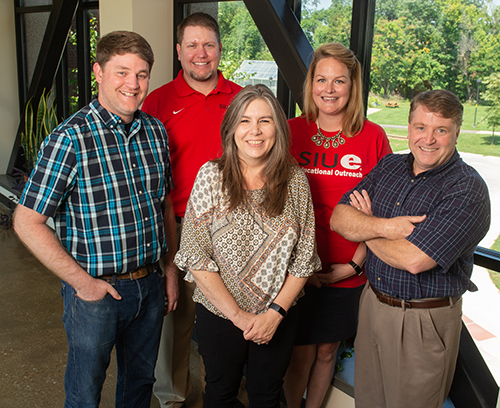 The U.S. Environmental Protection Agency (EPA) has awarded Southern Illinois University Edwardsville a $100,000 environmental education grant. The funding will support SIUE in its efforts to increase public awareness and knowledge regarding three critical clean water issues: regulated pollutants, emerging pollutants and biological contamination.
The U.S. Environmental Protection Agency (EPA) has awarded Southern Illinois University Edwardsville a $100,000 environmental education grant. The funding will support SIUE in its efforts to increase public awareness and knowledge regarding three critical clean water issues: regulated pollutants, emerging pollutants and biological contamination.
“We are excited to receive an EPA environmental education award as it allows us to integrate education, research and outreach, and involve our students in these endeavors,” said Kevin Tucker, PhD, assistant professor in the College of Arts and Sciences’ Department of Chemistry. “This project involves training undergraduate students to collect field water samples, and perform biological and chemical testing on them to assess water quality. Our work will inform decisions made in the greater St. Louis area by industry, agriculture and residents alike.”
“EPA is working hard with our partners to ensure every single American has access to clean, safe water,” said Region 5 Administrator Cathy Stepp. “EPA is proud to support organizations like Southern Illinois University Edwardsville in their efforts to engage and inform the public on this critical issue.”
Project collaborators include Tucker, Robert Dixon, PhD, associate professor in the Department of Chemistry; Matthew Maas, director of the Environmental Resource Training Center at SIUE; Educational Outreach Specialist Courtney Breckenridge; and Connie Frey Spurlock, PhD, associate professor of sociology and director of the SIUE Successful Communities Collaborative.
According to Breckenridge, who is also an environmental sciences doctoral student, this funding will support two main project goals: ensuring clean, safe water supplies, and increasing transparency, public participation and community collaboration on these issues.
She points toward students as being at the center of this work. Grant funds will support trainings and interactive displays, as well as a student summit and community kickoff event. Students, teachers and citizens will be provided with tools and solutions to reduce pollutants in the water supply, increase awareness of contamination risks and solutions, develop interest in environmental careers, and utilize community partnerships to increase public understanding of clean water issues.
“We’ll accomplish this from a combination of applied research in sampling regional water supplies and disseminating that information through a combination of public geospatial databases and targeted presentations,” Breckenridge explained. “Students will build their technical skills tackling research questions that matter, then turn around and practice the soft skills of teamwork, problem-solving and communications.”
“Students in our From the Ground Up organization were the inspiration for this grant, as they’ve grown leaps and bounds in raising awareness about the science and facts as they relate to food, water, energy, and climate,” Breckenridge added. “Our students learn to bridge between the lab and a public audience, whether that’s with their fellow students, in a public presentation or for a legislative panel. We’re building awareness and programming about these issues from the ground level, one project at a time.”
Illinois’ proximity to major waterways, and the rust and corn belts, uniquely position SIUE to tackle these issues, utilizing its expert faculty, staff, and students to lead the efforts of improving water quality.
“Illinois is the merging of the rust belt in the north and the corn belt in the south,” Tucker explained. “Each of these regions produce significant pollution challenges to be managed by wastewater treatment plants in order to mitigate the effect of a large variety of harmful biological, regulated and emerging pollutants on the environment.
“Considering the mighty Mississippi to the west and Lake Michigan to the north, the “freshwater” resources available to Illinois could make it a leader in water supply provided that the pollution of our water is managed. Researchers will specifically target biological contamination such as Legionella, emerging pollutants such as pharmaceuticals and personal care products, and regulated pollutants such as lead and other heavy metals, and nitrates.”
For more information, visit www.epa.gov/education.
Photo: (L-R) Matthew Maas, director of the Environmental Resource Training Center at SIUE; Kevin Tucker, PhD, assistant professor in the Department of Chemistry; Connie Frey Spurlock, PhD, associate professor of Sociology and director of the SIUE Successful Communities Collaborative; Educational Outreach Specialist and Environmental Sciences Doctoral Student Courtney Breckenridge; and Robert Dixon, PhD, associate professor in the Department of Chemistry.